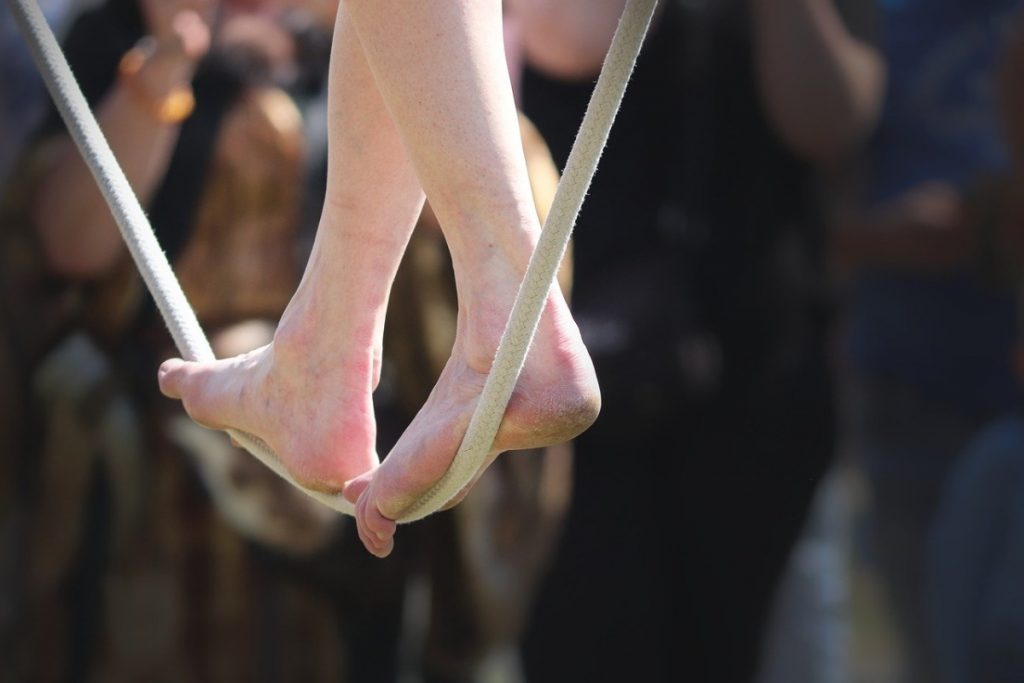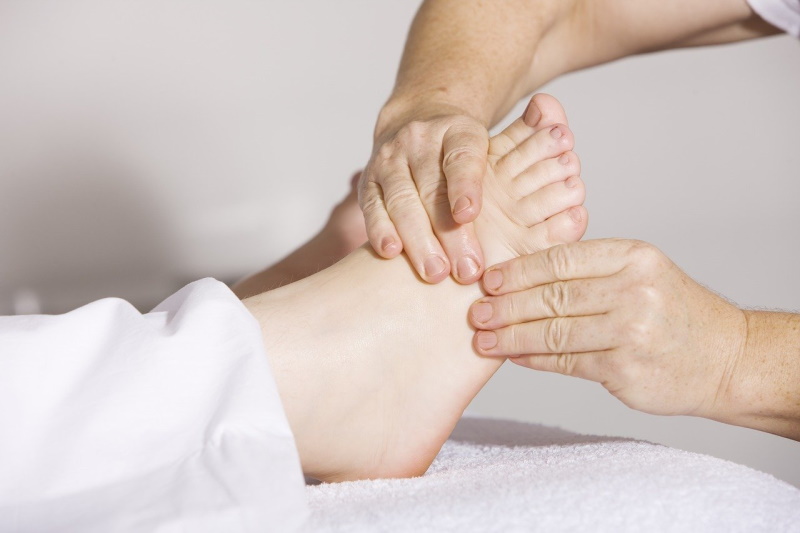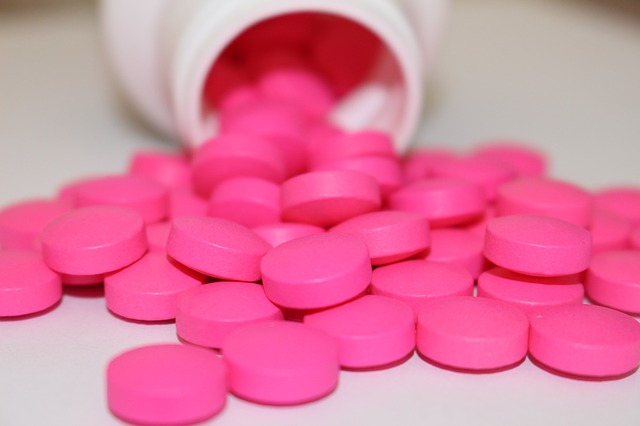Your feet are involved in almost everything that you do. From walking, standing, and running, you spend most of your time on your feet. Furthermore, your feet have to bear your entire body weight, which means they are always under an extreme amount of pressure. Therefore, it’s common to experience, fatigue, pain, discomfort, and inflammation on your feet, from time to time. The good news is that you don’t always have to visit a doctor whenever you experience fatigue or discomfort on your feet. Here are some of the methods that you can use, to soothe your tired, sore feet.
Stretch Your Feet
Whether you spent the entire day on your feet or you exercised harder than you are used to, tired or sore feet can leave you feeling uncomfortable and drained. Stretching remains one of the most effective methods of relieving tired muscles and joints. Apart from relieving fatigue, stretching and exercising regularly will strengthen the muscles in your legs and feet, increase the range of motion and keep you active for long periods. Most stretching exercises are simple and straightforward, meaning you don’t require complicated equipment. Furthermore, you can do them anywhere, whether you are in your bedroom, relaxing at the balcony or watching TV in your sitting room. Some of the stretching exercises that you can use to relieve your tired feet include:
- Runner’s stretch: Exercises such as running on the treadmill can leave you with tight calf muscles and tired feet. Performing this exercise will help to loosen the calf muscles, thus promoting blood flow to the tissues in those areas. To perform this exercise, you simply need to lean against a wall with your back leg stretched and your front leg bent. You should then raise the heel of your back leg and then return it to the same position slowly. Do the same for both legs, holding the heel in that position for approximately 30 seconds.
- Big toe stretch: The big toe plays an important role when it comes to foot support and stability. Increasing its range of motion will go a long way in minimizing fatigue and enhancing your stability. And this is where the big toe stretch exercise comes in. To perform the big toe stretch, you should sit up straight on a chair, making sure your feet are flat on the floor. You should then lift the right foot to rest on your left thigh, and then use your fingers to stretch it gently.
- Ankle stretch: Standing in the same position for long will lead to muscle spasms and contractions in your ankles. To alleviate this tightness, you should stretch your ankles and toe joints, using a strap or your hands. Holding each motion for 15 to 20 seconds will help to stretch, relax and strengthen them.
Stretching exercises will make your feet more flexible, activate your body’s self-healing mechanisms, and strengthen your legs and feet, thus improving numerous aspects of your lifestyle. Furthermore, you can do these exercises anytime and anywhere.
Massage
Massaging your tired feet will help to reduce muscle inflammation and tension, promote better blood flow and help to break down scar tissue. You can either massage the feet on your own at home or visit a massage specialist. If you will be massaging your feet at home, you can use essential oils such as peppermint for better results. Immediately after the massage, you should drink plenty of water, to flush out the inflammatory substances, toxins and lactic acid from your body. If you fail to do so, these toxic substances may cause nausea, and headache, among other issues. Apart from foot massage, engaging in touch therapy can also provide further relief from fatigue and soreness. When performing the touch therapy, you should pay more attention to the plantar fascia muscle, since it plays an important role in providing support and form to the arch. The plantar fascia muscle also plays a role in shock absorption, whenever you put pressure on your foot. A tight plantar fascia can lead to foot soreness, among other issues.
Leverage RICE Method
Rest, ice, compression, and elevation, or popularly known as RICE, has been used for many years to alleviate pain, fatigue, and discomfort on muscles and joints. Rest immobilizes the affected area, thus preventing further issues while ice will numb the area and reduce the pain. Compression, on the other hand, will keep the inflammation under control while elevation will promote blood flow to the affected area while reducing swelling, pain, and discomfort. Apart from helping to alleviate muscle fatigue, the RICE method can also treat moderate and mild foot injuries like strains, bruises, sprains as well as other soft tissue injuries. If you have tried this therapy and it doesn’t seem to work, then it’s advisable to seek medical attention.
Take a Footbath
Epsom salt foot baths can also help to reduce swelling, pain, and fatigue, especially if it has occurred due to muscle tension. Epsom salt is readily available in health and wellness stores across the country. You just need to visit a store near you and purchase the amount that you want. You should then mix that salt with warm water and then soak your feet in the water for 15 to 20 minutes. The magnesium present in the salt will help your feet to relax and you will feel much better. Don’t soak your feet in the water for more than 30 minutes per session, since the salt can dehydrate and crack your skin. Also, make sure your dry your feet properly after the footbath, to prevent slipping and sliding hazards.
Acupressure
Insufficient blood flow to your feet and legs is one of the causes of fatigue. The good news is that you can improve blood flow to your legs, and feet, and relieve fatigue, using acupressure. Acupressure is a Chinese alternative therapy, which entails the activation of various pressure points around the body, to promote healthier blood flow. Some of the pressure points that can be activated using acupressure include the spleen, stomach, and bladder. Applying the right amount of pressure on these points will stimulate and enhance circulation to your legs and feet, thus helping to relieve fatigue, muscle spasms, and soreness. If you’ve never used acupressure before, it’s advisable to consult a specialist first.
Take Pain Relievers
Fatigue is sometimes accompanied by inflammation and soreness. If interventions like massage, stretching, and foot baths have not provided the relief that you wanted, then you can use over the counter pain relievers. Medications like naproxen, ibuprofen, and aspirin can provide a short-term solution to help you deal with soreness and inflammation on your feet. However, it’s important to note that these medications can have some undesirable side effects. Therefore, it’s not advisable to use them for more than two weeks. Also, don’t take them if you have kidney disease, heart disease, ulcers or other serious medical complications. Also, ensure you consult your doctor first before you use them.
Tips to Minimize Feet Fatigue
The above remedies will help to relieve your tired feet, thus eliminating the need for special ointments or complicated medications. While it’s almost impossible to prevent feet fatigue completely, various measures are available, which you can leverage to minimize feet fatigue. Some of the methods that you can consider include:
- Increase vitamin D uptake: Vitamin D plays a vital role in building strong and healthy bones. Its deficiency can lead to muscle fatigue and joint pain. You can increase your vitamin D uptake by basking in the sun during the morning hours. However, this might not be possible sometimes, especially if you have a tight work schedule. In such a situation, you can consume foods and supplements that are rich in vitamin D.
- Wear proper footwear: The majority of leg and foot problems arise from improper footwear. If you spend most of your workdays on your feet, you should always make sure that the shoes you are wearing offer ample support and shock absorption.
- Shed excess weight: Your feet endure a lot of strain, especially if your work involves standing for long durations. If you are obese, your feet will be forced to work even harder, and you will always end up with achy or sore feet. Losing excess weight will minimize the amount of strain exerted on your feet, thus helping to reduce muscle fatigue.
Drinking enough water, at least 8 to 10 glasses per day, will also help to promote healthy circulation of blood and other body fluids, thus preventing the build-up of fluids in your legs. Also, if your work involves standing on one spot for long periods, it’s highly advisable to take regular breaks and stretch your leg muscles.
Closing Remarks
Ample rest, combined with the above tips should help to relieve feet fatigue and rejuvenate your legs. However, if you continue to experience the soreness and fatigue for more than a few days, you should consult a physician. Your doctor will examine you, identify the cause of the problem, and then recommend an appropriate treatment method.





0 comments